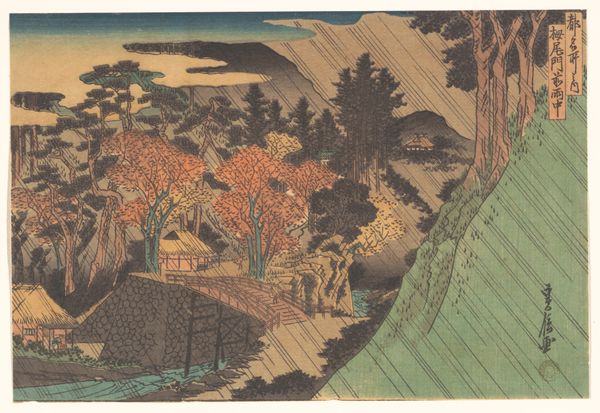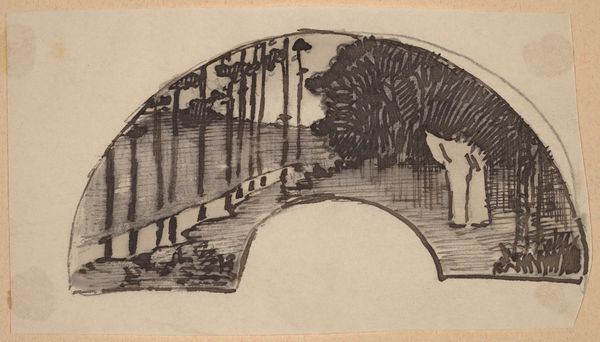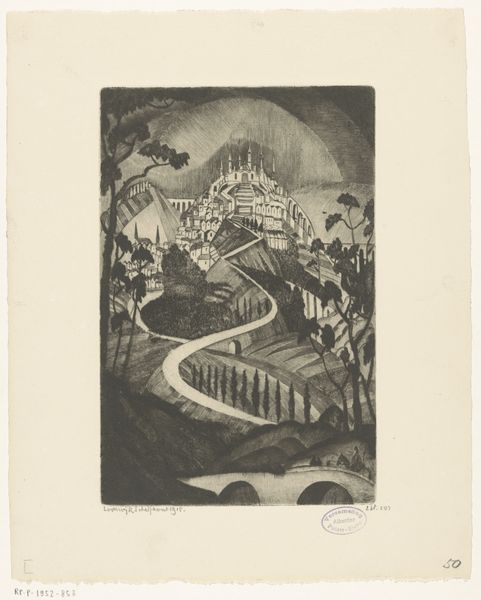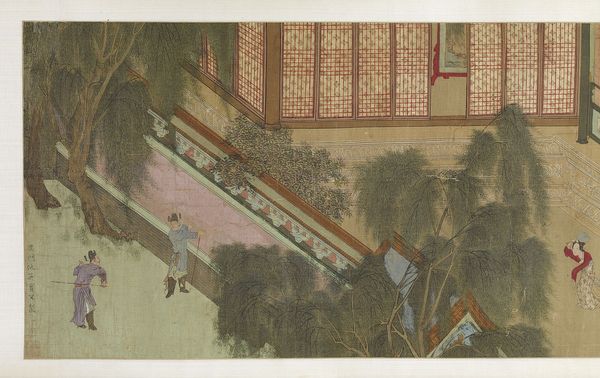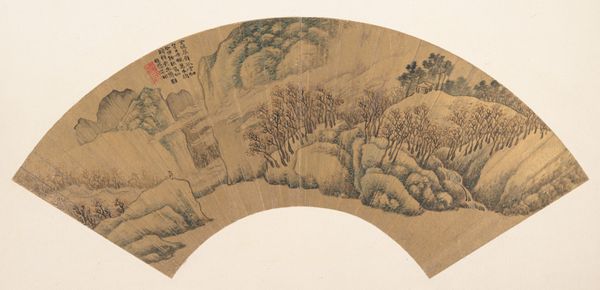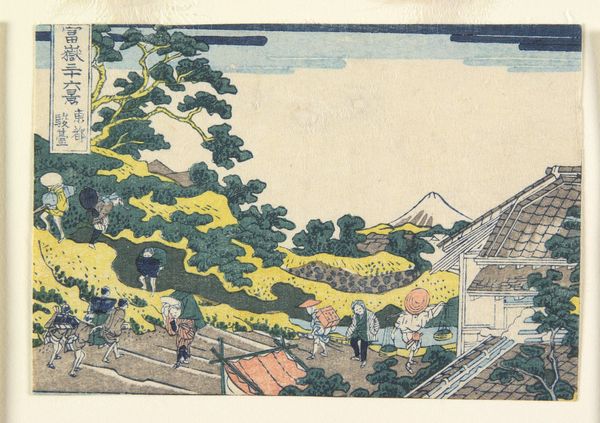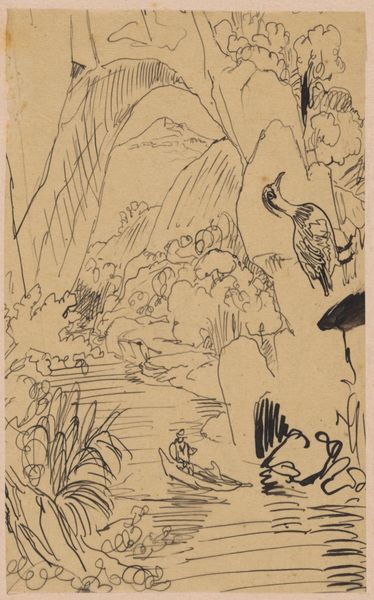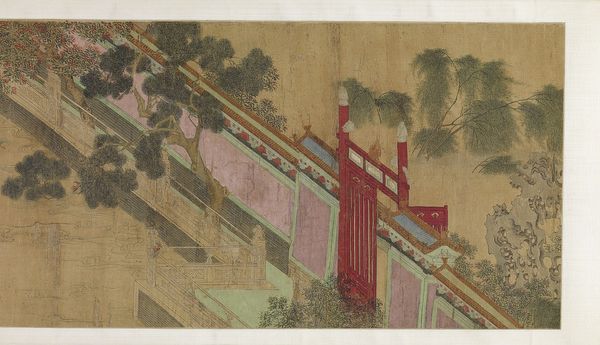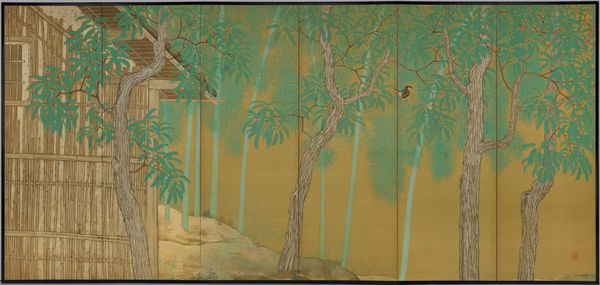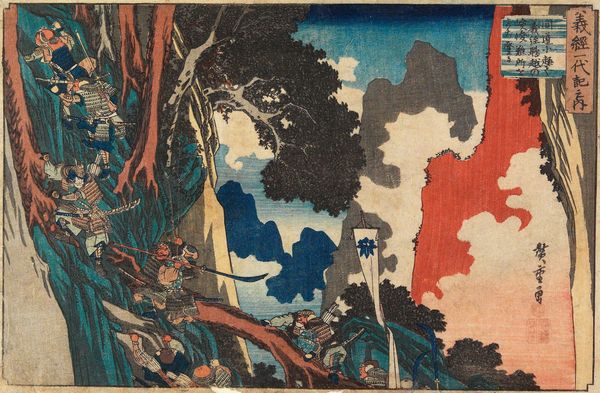
drawing, print, woodcut
#
art-deco
#
drawing
#
water colours
# print
#
landscape
#
mural art
#
woodcut
#
naive art
#
abstraction
Copyright: Public domain
Curator: This print, titled *Wisteria, Wentworth House*, was created by Dorrit Black in 1931, using a woodcut technique. Editor: It strikes me as a rather joyous and flattened interpretation of a garden scene, reminiscent of a stage set, perhaps for a whimsical play. The colors are certainly unexpected. Curator: Indeed. Black was deeply interested in abstraction. We see it in the way she simplified the forms of the wisteria and foliage. The composition employs a rather limited palette – mostly greens, pinks, and browns – giving the artwork a graphic quality typical of the Art Deco movement. The artist studied the formal language of cubism. Can you see traces of that impact on her treatment of the scene here? Editor: I do, especially how the planes are stacked, flattening depth. One can almost read it as a critique of how idealized gardens reflect controlled social spaces, devoid of genuine wilderness, particularly given Black’s interest in pushing artistic boundaries in Australia. Were there other women artists experimenting similarly? Curator: Black was a significant figure pushing for modernism in Australian art, no question. Her woodcuts from this period use the medium to push forward modernist ideals she explored, creating imagery infused with a unique sense of place. She employed this technique as a form of social commentary too, I believe. Editor: The use of a somewhat rough medium like woodcut contributes to a powerful effect when you consider her exploration of modernist painting. What do you make of the symbol of wisteria? Does it carry cultural meaning here? Curator: Wisteria can often symbolize long-life and immortality, beauty, reflection, and even sensitivity, but here, simplified to their basic form, do you believe Black attempts to strip back that iconography? The wisteria’s traditional association, intertwined with the controlled garden setting, offers a potential duality mirroring modern societal constructs. Editor: It all certainly layers additional perspectives when considering Black's artistic mission in pushing modernist ideals within Australia. Thank you. Curator: My pleasure. It’s these sorts of visual paradoxes and socio-historical contexts that reveal the depth beneath the beautiful surface of Black's artwork.
Comments
No comments
Be the first to comment and join the conversation on the ultimate creative platform.
